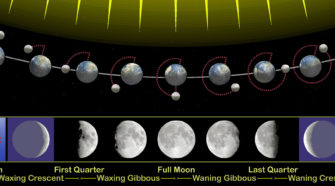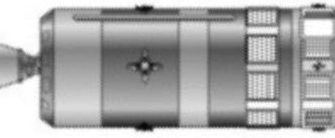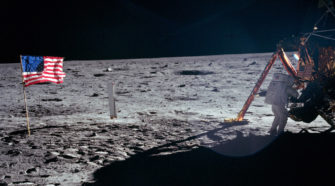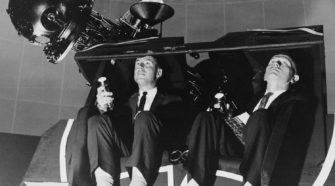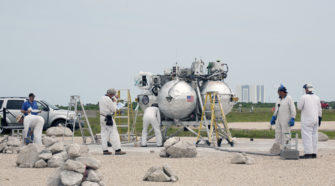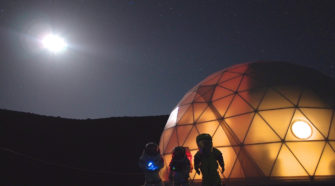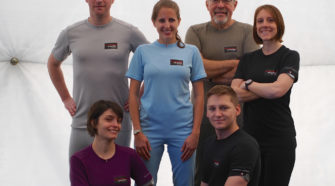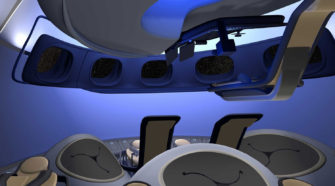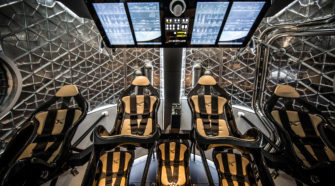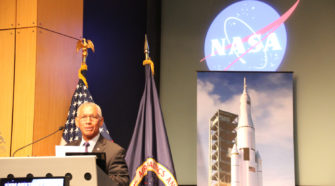Issue #8 (July 2014)
Moon phases: Past, present and future
Take a look tonight at the Moon. What lunar phase do you observe? If you and your students want to learn more about the lunar phases before studying the night sky, we recommend: http://bit.ly/RShiwaay. Observing the Moon night after night and either photographing the phase or drawing it, is a good way to understand the …
The new Eagle has landed (via the Boeing Space Tug)
Vocabulary •Landing Kit: Includes the lunar landing legs, infrastructure, landing radar, etc. •Lunar Investment: The amount of money needed to fully fund a mission to the Moon •Lunar Material: A certain substance that can only be found on the Moon •Powered Ascent Initiation (PAI): The lunar liftoff ∆V requirements equal to 1,890 mps •Powered Descent …
Unsung heroes of the Apollo program
For years history has celebrated the crews of elite astronauts who rode fire to the Moon and the unique twelve who walked on its surface. To a lesser degree, the senior mission specialists working in Houston and in Florida were also lauded. But at its height during the Apollo program 400,000 people were involved in …
Learning celestial navigation at Morehead Planetarium
You might not think a visit to a planetarium could save your life, but that’s how at least seven astronauts see the Morehead Planetarium and Science Center in Chapel Hill, N.C. Nearly every astronaut in the Mercury, Gemini, Apollo, and Skylab programs made multiple visits to Morehead to learn celestial navigation. Each spent at least …
Project Morpheus: Flying a test bed for future landers
It’s May 22, 2014, another bright sunny day at Kennedy Space Center in Florida where a shiny four legged vehicle, dubbed Morpheus, stands in a special area at the north end of the Shuttle Landing facility awaiting the scheduled time to fly. This is the same facility where 78 of the 135 Space Shuttle missions …
HI-SEAS 2: Living on a simulated Mars
How will future astronauts live on Mars? This is the question asked by NASA and many of the organizations working toward the advancement of human spaceflight. The challenges of landing and living on another planet are difficult to recreate on Earth. In order to do this, NASA and other space organizations use analog studies to …
Meet the crew of HI-SEAS 2
Mission Psychologist: Dr. Ron Williams Dr. Williams was born and raised in Bloomington Indiana. He received his BA degrees in Psychology and Chemistry at Indiana University Bloomington in 1976. He received his MA degree in Experimental Psychology with a concentration in gerontological psychology from the University of Notre Dame and his PhD in Neuropsychology from …
Boeing unveils CST-100 spacecraft
They say there is no substitute for experience, and when it comes to spaceflight there are few in the world that can match the proven expertise and decades of experience that Boeing brings to the table. Three companies are currently developing spacecraft to fill the void left by the retirement of NASA’s Space Shuttle fleet …
Revealing a new Dragon
In my lifetime, I have witnessed what I thought may be the entire life cycle of the era of manned flight in the USA; from the challenge of Russia’s Sputnik in 1957, when I was 11 years old, to the ROAR of the last Space Shuttle launch in 2011. Oh, brother. Was I wrong. Before …
New vehicles pave way for exploration
Why is NASA’s Commercial Crew Program to develop private human transport ships to low Earth orbit important? That’s the question I posed to NASA Administrator Charles Bolden when we met for an exclusive interview at NASA Goddard Space Flight Center in Maryland. The Commercial Crew Program (CCP) is the critical enabler “for establishing a viable …

